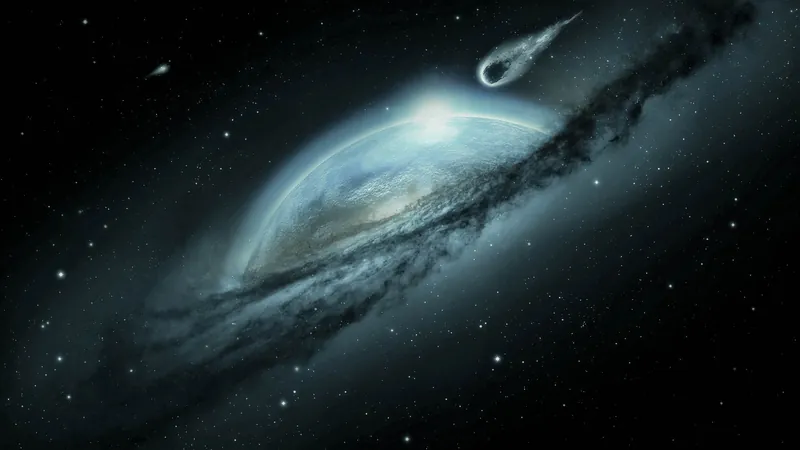
The Mystery of Missing Water: Why Meteorites Lack H2O Compared to Asteroid Samples
2025-04-15
Author: Michael
Unlocking the Secrets of Our Solar System
Meteorites, those ancient rocks that survive the fiery descent through Earth's atmosphere, hold crucial clues about the early solar system. Among them, carbonaceous chondrites are notable for their wealth of water, carbon, and organic compounds, providing a glimpse into the formative years of our celestial neighborhood.
The Paradox of Carbonaceous Chondrites
Despite the assumption that most meteorites would be water-rich given the abundance of such material in asteroids, less than 4% of meteorites identified on Earth are carbonaceous. A compelling question arises: where have all the carbonaceous chondrites gone?
Sample-Retrieval Missions Illuminate the Past
Recent sample-return missions like NASA's OSIRIS-REx and JAXA's Hayabusa2 have transformed our understanding of these ancient rocks. The pristine samples gathered from asteroids like Bennu and Ryugu allow scientists to analyze their untouched composition and delve into the building blocks of life.
Atmospheric Filters: A Misconception?
For years, scientists thought Earth's atmosphere filtered out fragile carbonaceous materials. These meteorites, which are often crumbly and weaker than their counterparts, face intense pressure and heat upon entering our atmosphere, making it challenging for them to survive.
Mapping the Cosmic Journey of Meteorites
Recent advancements in technology have enabled researchers to track meteoroid impacts through extensive observation networks. With estimates of around 5,000 metric tons of micrometeorites landing annually, teams like FRIPON and the Global Fireball Observatory are on the front lines, collecting data on meteor impacts and determining which types survive to become meteorites.
Heat Stress: An Unexpected Adversary
Surprisingly, many carbonaceous fragments never reach Earth. During their orbits, exposure to proximity with the sun weakens these materials, cracking them and causing significant losses. Only 30% to 50% of what remains can withstand the atmospheric descent.
A Call for Future Research
This revelation changes the narrative surrounding carbonaceous meteorites, calling for refined methodologies in the detection and analysis of meteoroids. With better telescope technology and atmospheric modeling, scientists can work to uncover the truths about these elusive rocks and their significance in understanding our planet’s origins.









 Brasil (PT)
Brasil (PT)
 Canada (EN)
Canada (EN)
 Chile (ES)
Chile (ES)
 Česko (CS)
Česko (CS)
 대한민국 (KO)
대한민국 (KO)
 España (ES)
España (ES)
 France (FR)
France (FR)
 Hong Kong (EN)
Hong Kong (EN)
 Italia (IT)
Italia (IT)
 日本 (JA)
日本 (JA)
 Magyarország (HU)
Magyarország (HU)
 Norge (NO)
Norge (NO)
 Polska (PL)
Polska (PL)
 Schweiz (DE)
Schweiz (DE)
 Singapore (EN)
Singapore (EN)
 Sverige (SV)
Sverige (SV)
 Suomi (FI)
Suomi (FI)
 Türkiye (TR)
Türkiye (TR)
 الإمارات العربية المتحدة (AR)
الإمارات العربية المتحدة (AR)